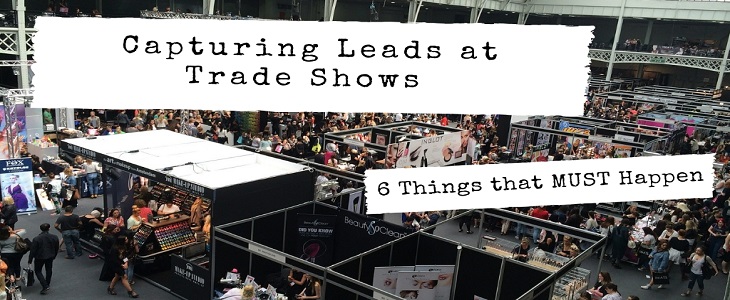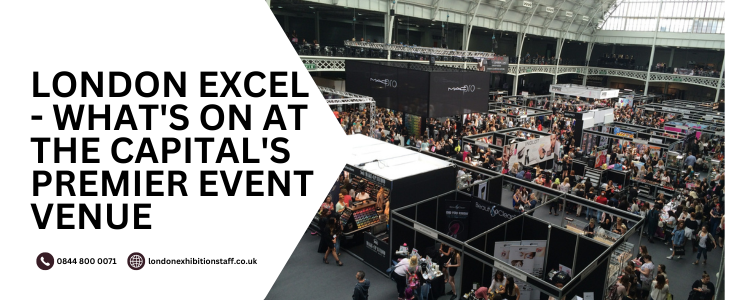Unveiling the Exciting Shows Coming to London Excel This May and June As the summer…

Capturing Leads at Trade Shows
Capturing Leads at Trade Shows – 6 Things that MUST Happen
We talk a lot about planning and trade show strategies before the event but what happens when the booth is packed away and you have retreated to the safety of your office? And what about all those leads captured by your hire promotional staff?
What really happens after the trade show?
The reality is very little. Statistics give us an idea of what really happens;
• 87% of trade show leads aren’t really followed up
• The majority of businesses see following up leads as ‘cold calling’
• Businesses take up to a month to work through their trade show leads
• And only 1 in 4 businesses actually knows what happens to the long list of leads they got from the trade show.
In other words, the majority of businesses only harness a fraction of the marketing power of a trade show. But what should you do when you are back at your desk? How do you make more of your trade show leads?
Getting the best leads to follow up
How much thought do you really put into gathering and generating leads at a trade show? With a strategy for you and your exhibition staff team to work to, you increase chances of success.
#1 Work out what are ‘leads’ are and what are not
A business card in a fishbowl is not a lead. An entry into a competition is not a lead. A trade show lead is when personal interaction has happened between you and a potential customer. And from this conversation, you will probably have decided the next step – in other words, that you will contact them in the coming days.
#2 Set goals
Any strategy needs goals because this way, everyone knows not only what they are aiming for but what their role is. You might want to set individual targets, such as one qualified lead per hour per member of staff on the stand.
#3 Gathering information
The thing about exhibitions and trade shows is that when you talk to a potential customer, you always think ‘I’ll remember what they said they did etc’. This NEVER happens! Thus, you need to develop a system to decide what information you need to gather. You can use a program on your tablet for example or have a ‘capture sheet’. You don’t need to know people’s inside leg measurement but you need to record what individual leads are looking for and so on.
#4 A grading process
Let’s recap the trade show lead story thus far – you have a strategy with clear goals, everyone knows what their role is and what information they need to be gathering. And now, you need to take this one step further. A grading process gives you more detailed information after the trade show.
Consider aspects such as budget, timeframe, what the customer needs help and – the most important piece of information in some ways – are they the person with the authority to spend?
#5 Decide HOW to follow up
With all this information and plenty of new leads to go at, you need to have a strategy about how you will continue the conversation with potential new customers. There is a line between harassing and irritating, and sending a pleasant, personal email to remind someone that you met, what you offer and suggesting a meeting.
#6 Review and learn from it
This won’t be the only trade show that you go to. But with a trade show lead strategy behind you, it could be one of the most successful.
The review process allows you to learn from the strategy – do you need to act quicker, for example? Do you need to adjust the strategy aims so that you make even more of the next exhibition you are booked onto?
[su_box title=”GET IN TOUCH” box_color=”#0671A9″ title_color=”#000000″]


